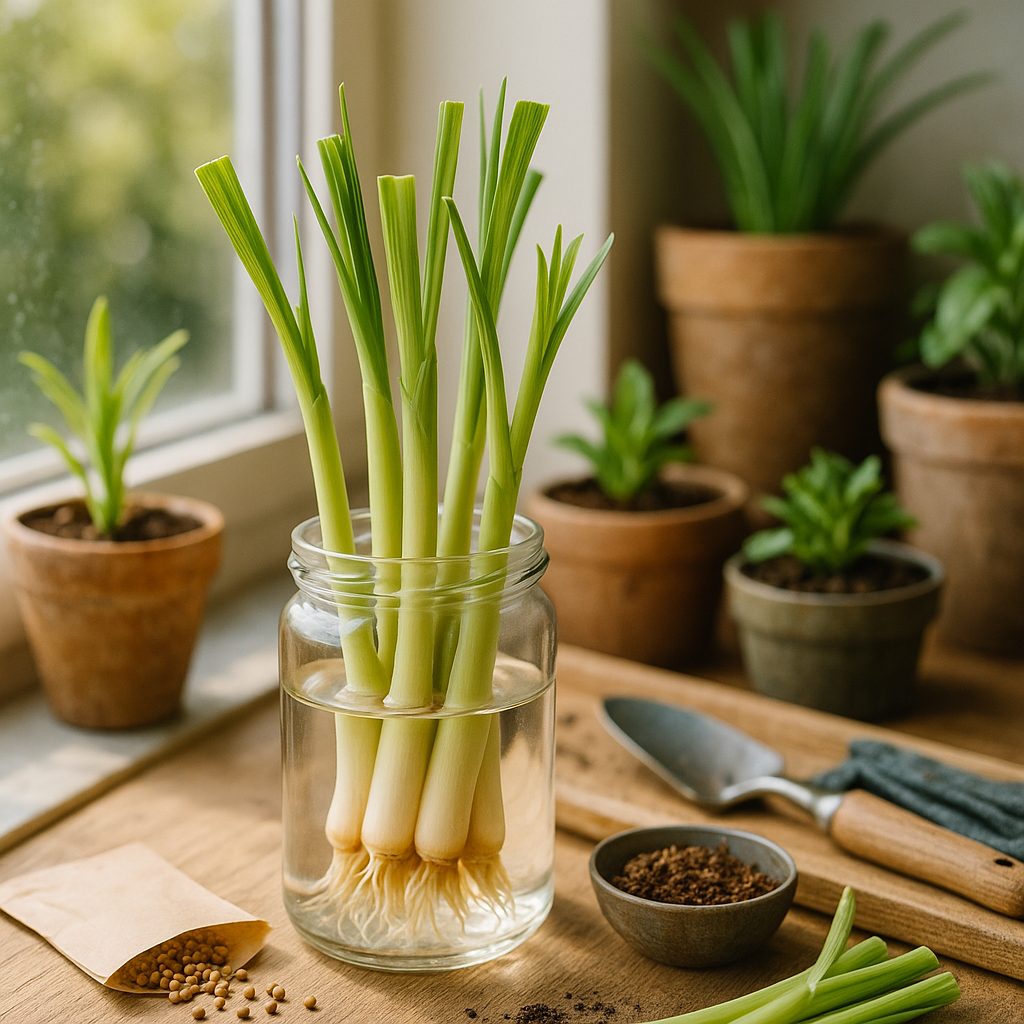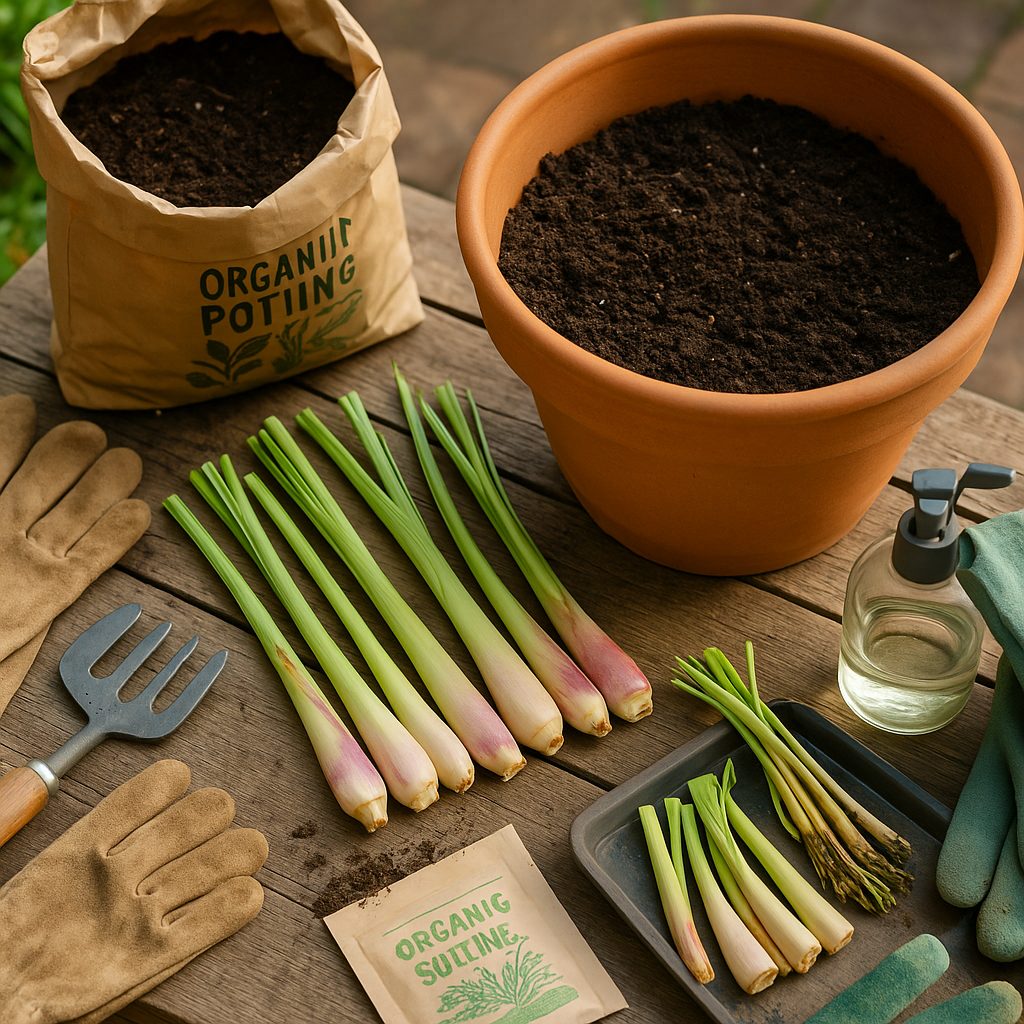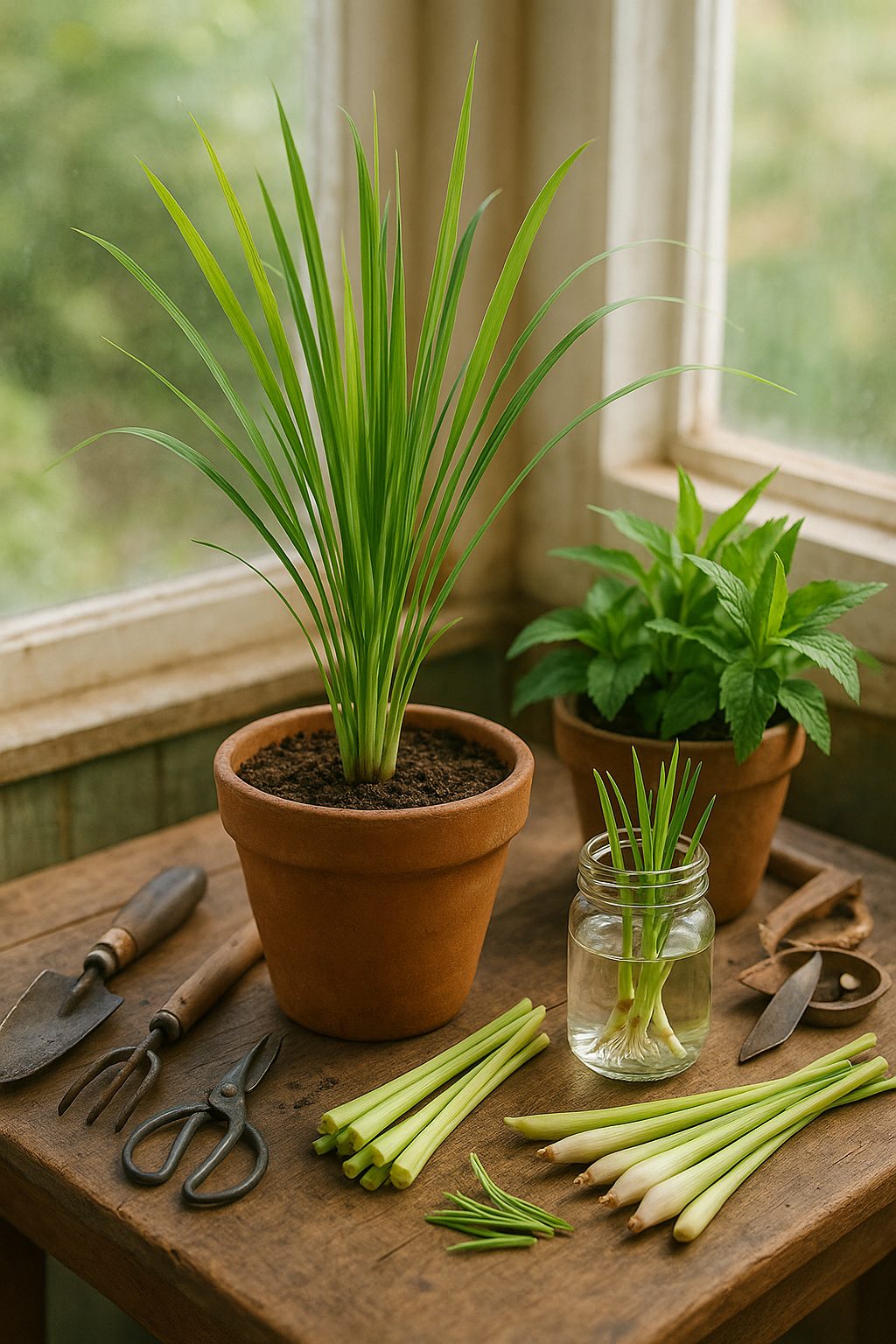Getting Started with Lemongrass

Growing lemongrass indoors is an easy and rewarding way to enjoy this citrusy herb year-round, whether you’re after its vibrant flavor for homemade Thai curries or hoping to harness its soothing properties in a cup of herbal tea. Lemongrass is prized not only in the kitchen—for flavoring soups, stir-fries, and marinades—but also in natural remedies for its antifungal and calming effects, making it a smart addition to any home gardener’s lineup.
Indoor cultivation lets you bypass cold snaps and pests that can threaten outdoor crops, while giving you a fresh supply on your windowsill whenever you crave bright, aromatic herbs. Even if your outdoor space is limited or nonexistent, growing lemongrass indoors can turn a sunny corner of your apartment into a miniature tropical retreat.
Starting Your Lemongrass Journey
When beginning, you’ll encounter a few options. You can sprout new plants from fresh lemongrass stalks easily sourced from Asian markets or grocery stores—just root them in water until they form nice white roots, then transfer them to a pot. If you prefer starting from scratch, seeds are available, but they take a bit longer to establish and are generally less common for home growers.
Choosing the Right Container
Lemongrass thrives in large pots that offer good drainage and space for its root system to expand; this keeps things tidy indoors and lets you move your plant outside when the weather warms up. If you’re lucky enough to have a yard or garden, planting lemongrass in the ground yields lush, towering clumps—ideal for frequent harvests.
In either case, with the right variety and setup, you’ll have fresh lemongrass on hand for both cooking and wellness all year long.
Choosing and Sourcing Lemongrass
When selecting lemongrass for growing—whether at a grocery store, farmer’s market, or nursery—look for sturdy stalks that feel firm and have pale green to light yellow bases. Avoid stalks that look dried out, brown, or limp, as these likely won’t root well. Often, Asian markets carry the freshest stalks, ideal for home propagation.
If you want to start lemongrass from scratch, you’ll face a choice between seeds and starter plants. Seeds offer a budget-friendly option but require a little patience and can be slow to germinate, needing warm, consistent conditions to sprout. On the other hand, starter plants or healthy stalks establish more quickly and are less fussy; you can simply place them in water until roots appear, then transplant to soil.
If you buy from a nursery, check that the plants are free from bugs and mold, and that the leaves aren’t yellowing or torn. When buying seeds, opt for reputable suppliers since older seeds often have low germination rates. If your climate is on the cooler side, starter stalks tend to be easier to grow indoors and are more forgiving than seeds.
Ultimately, healthy lemongrass starts with a healthy beginning: look for fresh, plump stalks or well-rooted starter plants to boost your success, and always ask for advice in-store if you’re unsure.
Planting Lemongrass Indoors and Outdoors

Rooting lemongrass at home is simple and rewarding, whether you’re growing it on a sunny windowsill or in your backyard. To start, buy fresh lemongrass stalks from a grocery store or market—look for ones with firm, healthy-looking bases. Trim about an inch off the tops and peel away any dead outer leaves.
Place the stalks upright in a glass jar with enough water to cover the roots but not submerge the whole stalk. Set the jar on a sunny windowsill, and within a week or two, you’ll notice roots forming and new shoots emerging. Change the water every few days to keep it fresh.
Once roots are a few inches long, it’s time to prepare your planting area.
Planting in Pots
Choose containers at least 12 inches wide and deep—lemongrass likes room to grow. Use a well-draining potting mix enriched with compost.
Planting Outdoors
Pick a sunny spot with fertile, loose soil; work in some compost or organic matter to enhance drainage and nutrients. Plant the rooted stalks 24 inches apart to give them space to thrive.
Care Tips
- Lemongrass loves heat: aim for daytime temperatures above 70°F (21°C) and at least six hours of direct sunlight daily.
- In cold climates, plant outdoors after the danger of frost has passed, or grow lemongrass indoors year-round in a warm, bright spot.
- Water regularly, keeping the soil consistently moist but not soggy.
With these steps, you’ll be harvesting fragrant lemongrass leaves and stalks in a matter of months—perfect for cooking or herbal teas.
Caring for Your Lemongrass Plant
Caring for your lemongrass plant is surprisingly straightforward, but paying attention to its basic needs will help it thrive, whether indoors or outdoors.
Start by keeping the soil consistently moist but not soggy—water your plant when the top inch of soil feels dry, usually every couple of days in hot months and a bit less in cooler weather. Lemongrass loves rich, well-draining soil, so mixing in compost or organic matter when planting is a great move.
Fertilize lightly every four to six weeks during the growing season with a balanced, water-soluble fertilizer (look for something with equal parts nitrogen, phosphorus, and potassium, like a 10-10-10 formula).
If you grow lemongrass inside, place it in a sunny window where it gets at least six hours of direct sun daily, or supplement with a grow light. Outdoors, pick a bright spot with some airflow, and if you’re planting multiple stalks, space them 2–3 feet apart to avoid crowding.
Humidity helps, but lemongrass is pretty forgiving as long as you’re not letting the air get too dry—occasionally mist indoor plants or set their pots on a water tray with pebbles to boost the moisture in the air.
Don’t forget to prune: regularly trim older, yellowing leaves and snip the tops of new shoots to encourage bushier growth. Pinch back flower heads if they appear, as this directs energy to the stalks and leaves you’ll be harvesting.
With these quick steps and a little attention, your lemongrass will stay healthy and vibrant, ready to flavor your favorite dishes.
Common Problems and Troubleshooting
Dealing with common plant problems doesn’t have to be overwhelming. Pests like aphids and spider mites are frequent unwelcome visitors—look out for tiny insects on leaves or webbing between stems. If you spot them, gently wipe the leaves with a damp cloth or spray them with a mixture of water and mild soap. For a more natural solution, introduce ladybugs, which are natural predators.
Root rot is another typical issue, often caused by overwatering or pots without adequate drainage. Make sure your plant’s soil dries out between waterings, and always check that excess water can escape from the bottom of the pot.
If you notice leaves turning yellow, your plant might be stressed from too much water or not enough light. Try moving it to a brighter spot and adjust your watering schedule accordingly.
Leggy growth, where stems stretch out and leaves appear sparse, usually signals that your plant needs more sunlight. Rotate your plant regularly so all sides get equal exposure, or consider supplementing with a grow light if natural light is limited.
By keeping a close eye on your plants and adjusting care routines at the first sign of trouble, you can quickly resolve issues and keep your houseplants healthy and thriving.
Harvesting and Using Lemongrass
Harvesting lemongrass at the right time is key to getting the most flavor and keeping your plant healthy for future use. Wait until stalks are at least half an inch thick and about a foot tall before harvesting; these are usually the most aromatic and tender parts.
Using a sharp knife or garden shears, cut the stalks close to the base, leaving a few inches so the plant can regrow—this encourages fresh shoots to come up quickly. After harvesting, rinse the stalks to remove dirt and peel away the tough outer layers until you reach the softer, juicy core.
To store fresh lemongrass, wrap the stalks in a damp paper towel and place them in a plastic bag in your fridge, where they should stay fresh for up to two weeks. For longer storage, slice the stalks and freeze them in airtight containers, or chop them for easy portioning later.
In the kitchen, lemongrass shines in curries, soups, stir-fries, and marinades—just bruise the stalk with the back of a knife to release its citrusy oils before adding it to your dish. For herbal uses, try steeping sliced stalks in hot water for a soothing tea, or add them to bathwater for an uplifting, aromatic soak.
With these tips, you’ll get the most out of every harvest, whether you’re cooking Thai-inspired meals or enjoying natural remedies at home.
